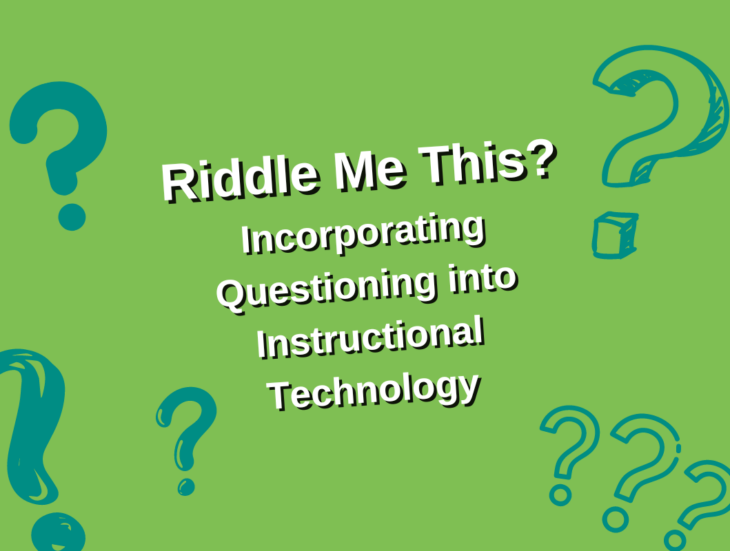
Questioning as an instructional factor weighs in at a .48 effect size, demonstrating the capacity to have a significant impact on student growth. Teachers ask anywhere between 300 and 400 questions a day, with the vast majority of those questions being lower level questions - recalling facts, demonstrating knowledge of procedures, etc) (Wilen, 1991). The researchers suggest that since these questions are lower in their cognitive level, teachers need to use many of them to get students to recall concepts (Wilen, 1991).
Effective questioning is a complex teaching task and should be planned for. Scripting out questions and evaluating them for their complexity has a significant effect on student’s ability to more deeply understand and evaluate concepts. According to Weston Kieschink, “What gets scripted gets asked”, and spontaneous questions are often low-level questions (Bold School). Additionally, supporting students in developing their own questions about concepts can lead them to deeper levels of conceptual understanding (Hattie, 1998).
Using a resource to develop and evaluate teacher and/or student questions is key in this process. Here are a few tools that we use at GWAEA:
- Grant Wood AEA’s Critical Thinking Flipbook
- Text-Dependent Questions (ELA)
- 8 Ways to Pose Better Questions in Math Class
Looking to get your students to ask more questions?
Incorporating Digital Tools
So, what does this look like in practice in a tech-rich environment? Pre-planned scripted questions can be loaded into a variety of different tech options. Poll Everywhere lays the foundation for high-level, pre-planned questions. With one click, teachers can display responses or additional questions for a deeper classroom discussion around misconceptions or opinions. Additionally, teachers could also structure a series of higher order questions into Socrative or Nearpod. These could be used to launch into a longer discussion of a concept or as an exit ticket to help plan for further discussion and instruction. Teachers can display student answers anonymously for further consideration by the class.
With regards to soliciting student questions and structuring student-led discussions, a few approaches and tools come to mind. Students can contribute their questions to an online board like Padlet. The ‘Shelf’ feature in Padlet can be used to model, organize, and scaffold student questions from recall to analysis/evaluative questions. This online question board may also serve as a spot for students to begin to prepare for a Socratic Seminar.
As students are engaged in discussion, Google Slides Q&A option allows students to pose questions in real-time and additionally upvote questions they find intriguing. Teachers or student moderators are able to choose and present any question to the whole class to build-up the discussion or introduce a new thought.
With regards to soliciting student questions and structuring student-led discussions, a few approaches and tools come to mind. Students can contribute their questions to an online board like Padlet. The ‘Shelf’ feature in Padlet can be used to model, organize, and scaffold student questions from recall to analysis/evaluative questions. This online question board may also serve as a spot for students to begin to prepare for a Socratic Seminar.
As students are engaged in discussion, Google Slides Q&A option allows students to pose questions in real-time and additionally upvote questions they find intriguing. Teachers or student moderators are able to choose and present any question to the whole class to build-up the discussion or introduce a new thought.
Key Takeaways
- Research suggests effective questioning by teachers and students has a positive effect on student achievement.
- Effective Questioning is a skill. It should be planned for using a tool to develop and evaluate rigorous questions. Students also need tools/scaffolds to develop their own questions.
- Well chosen technology can amplify teacher’s and student’s ability to pose and respond to thoughtful questions.
